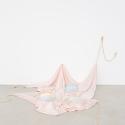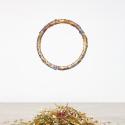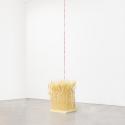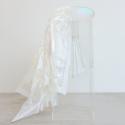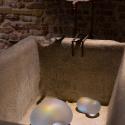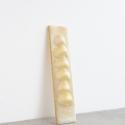Discipline
Abstract
Conceptual
Installation / Land / Site-specific
Material
Glass
Granite/Marble/Stone
Metal (other)
Textile
Region
International
Biography
Kaja Upelj’s practice gives presence of something alive, organic and sensual, and is challenging individual’s interaction and prompts a deep questioning of perception itself. Exploiting innate characteristics of materials and capturing the essence of body, the works elicit physical and sensorial response. Through the manipulation of primary materials such as glass, metal, and marble, Upelj emulates subtle nuances of bodily gestures, whose physicality she integrates into her work, though in a more abstract and less figurative sense. These sculptures posses a delicate and fragile beauty of intimacy, tenderness, and tension that define our relationship with ourselves and others. Despite being crafted from cold and sturdy materials, they evoke a sense of warmth and softness that makes one doubt their original composition.The iridescent colour found in her work symbolizes the viewer’s unstable perceptions. Our perception is not a fixed construct but rather a fluid accumulation shaped by childhood experiences, daily encounters, and interactions with others.
Through her work, Upelj delves into anthropology and psychology to determine complex tapestry of human connections. She draws intensively from her own body and imprints left of social interactions, implicit knowledge and the environment she belongs to. Flowers accompanying her works indicate rituals evoking the transformative nature of our personal journeys, mirrors are used as a means of the acceptance and reflections on self, and her sensual glass objects eloquently portray human being so beautifully; strong in appearance, fragile in reality.
Risking Life or Giving Life, 2024, relating to Simone de Beavoir’s book Second Sex—she claims risk is the criterion of value and she question the exclusion of the world of mothering from the realm of risk—Kaja’s performance video shows a young woman within the intimate confines of her kitchen, emblematic of the tension between autonomy and the maternal, weaving red droplets of blood on a thin silk thread. Accompanying the act, is the dialogue between mother and a daughter about pregnancy and abortion. Women experiences a tear in her subjectivity because the fetus is inside her body but it is not her body. The presence of the fetus is not only enriching her present while simultaneously destabilising it, but also holds both a promise and threat for the future.
